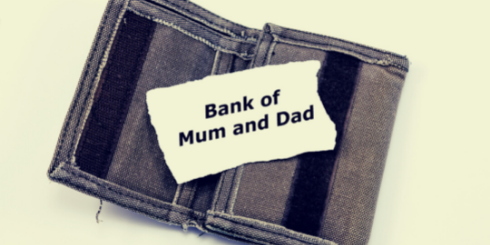Fertile ground for family feuds and great losses.
Many readers may have read the news that the colloquial ‘Bank of Mum and Dad’ (BOMD) “has about $34 billion estimated in loans, making it the nation’s ninth-largest residential mortgage lender and bigger than HSBC, AMP and Bank of Queensland, according to DFA”[1]. In our experience, BOMD is also a key player in the business lending space. With favourable (usually non-existent) interest rates and a relatively streamlined application process (ask and you shall receive), BOMD has easily become one of the largest and most versatile lenders in the country.
It’s human nature for parents to want to provide for their children in any way possible. Unfortunately, it isn’t as instinctual for parents and children alike to consider the potential financial, legal, or emotional consequences from providing large and usually undocumented loans between family members—particularly in insolvency events.
At Worrells, we’re frequently exposed to situations where either the children or their parents have financial difficulty when BOMD’s nest egg hatches into something far less than anything fruitful (often in the form of a liquidator or a bankruptcy trustee). This can lead to parents being unnecessarily exposed in circumstances where this could have been minimised or completely mitigated if simple steps were followed before the lending.

Below we set out some problematic scenarios and their solutions that may assist to limit children and their parent’s exposure in an insolvency event.
Scenario one
Bob is a company director running a struggling pub. Bob approaches his dad for financial assistance, who kindly helps by transferring, through a series of transactions, funds to and for the benefit of Bob and his pub. Years later, when it became apparent that Bob was likely facing bankruptcy, the dad tried securing the historically advanced funds by drawing up a loan agreement and lodging a caveat on Bob’s real property (which evidently would be the only source of recoveries in a bankruptcy). Upon bankruptcy, the caveat and underlying loan agreement review showed:
- A lack of proper documentation completed at the time of advancing funds.
- The loan agreement was likely to be invalid.
- The father was unable to substantiate the loan nor reconcile the actual amount advanced and to whom it had been advanced.
The father’s last-minute effort to secure his position proved to be too little, too late; and proved a costly mistake. The agreement was invalid, and due to being unable to substantiate what, if any, amount had been actually loaned, meant that it was unlikely the father could be admitted as an unsecured creditor. Ultimately, it was apparent that the father would be left with zero return from Bob’s bankruptcy.
Scenario two
Jane is the company director of a struggling beauty salon. Again, Jane approaches her parent for financial assistance. In the coming months (and in a move we would think is well and truly the opposite of what most advisors would recommend), Jane’s mum almost emptied her entire superannuation account into the struggling business. Despite these efforts, the business eventually failed and entered into liquidation. Jane’s mum became an unsecured creditor in the liquidation for the funds advanced; and unfortunately, did not receive a distribution from the liquidation due to a lack of sufficient recoveries.
Jane’s mum was left with no superannuation for her retirement and Jane was left without her business. We suspect that had Jane or her mum sought proper advice prior to advancing and receiving unsecured loans, it is likely that this scenario would have ended in far less heartbreaking circumstances.
What can be done?
Some useful tips for any party considering entering into a BOMD agreement are:
- Properly document any agreement you come to. Have your advisor prepare or review the documentation to ensure it is appropriate and serves the purpose it is created for—i.e. the agreement itself is valid and enforceable.
- If possible, secure your position. Register your agreement on the Personal Property Securities Register or lodge a caveat (should circumstances permit) over real property at or around the time of advancing the funds.
- Avoid, as far as possible, having BOMD advance loans to fund cash-flow deficiencies. If funds are to be loaned, limit it to the purchase of fixed assets only, which can (at the least) be used as some security for the advances.
- Treat BOMD advances no differently than from a typical lender. That is, ensure there is an ability to secure any loans and/or ensure there is an ability to meet regular repayments.
- Approach a professional and qualified advisor for assistance as early as possible and prior to advancing any funds.
Any lending is inherently risky, but with some relatively simple and often overlooked steps when funds are loaned between family members, you can ensure that you/ your client are better placed in the event things don’t go according to plan. We know that financial consequences can be catastrophic with large personal losses due to insolvency events. But perhaps the lesser-known (and arguably more devastating) effect is the irreparable damage and complete breakdown of family relationships that often flow on from these types of loans; where one party is often left wondering what went wrong and whether they were misled when providing funds.
If you or your clients have any queries or concerns regarding potential BOMD lending implications in insolvency scenarios, please reach out to your local Worrells partner.
Drew Austin, a supervisor in our Melbourne office wrote this article, with assistance from Nathan Deppeler.
[1] https://www.afr.com/companies/financial-services/bank-of-mum-and-dad-contributions-hit-34b-20210317-p57bkz#:~:text=The%20Bank%20of%20Mum%20and,of%20Queensland%2C%20according%20to%20DFA
